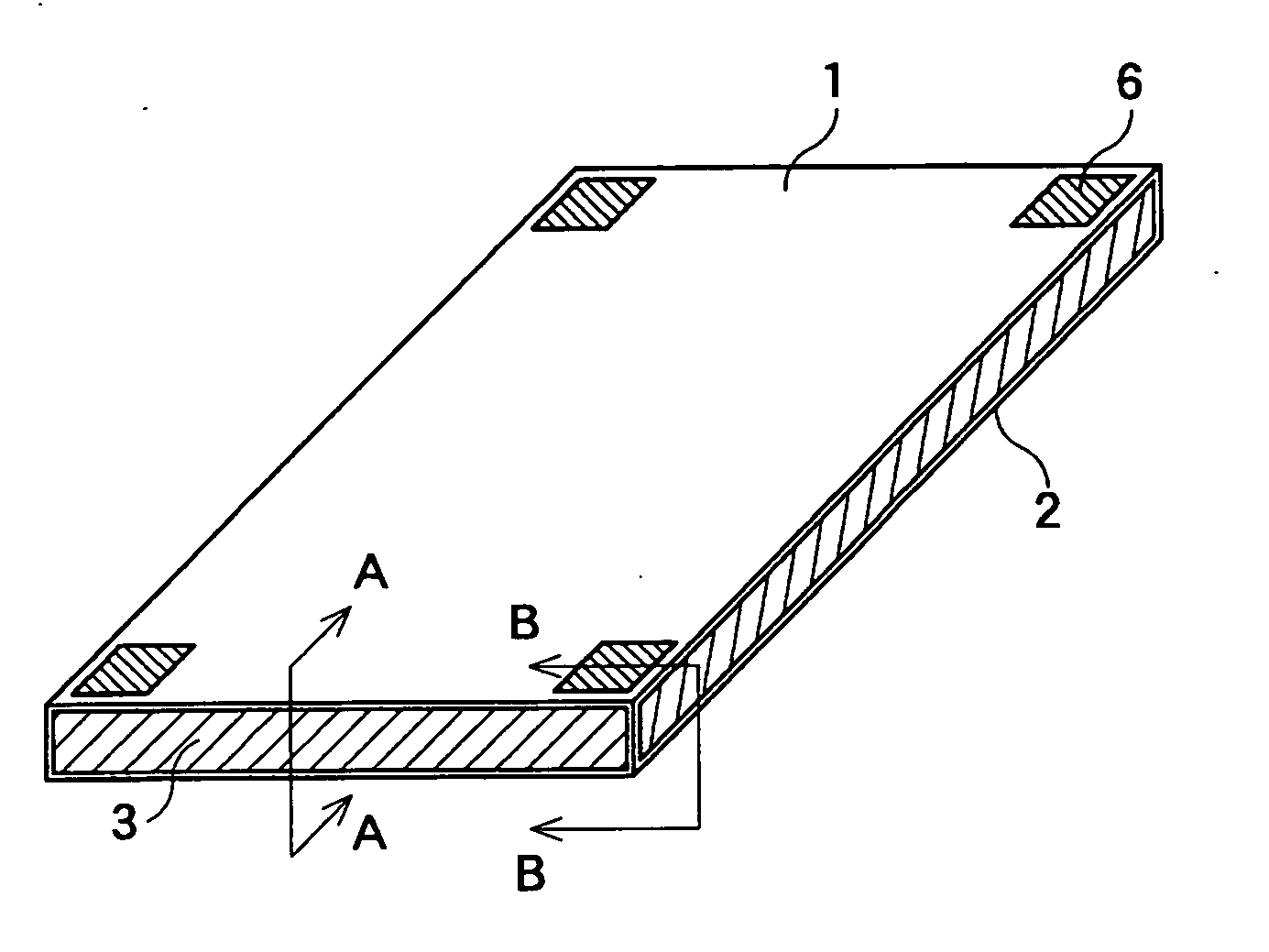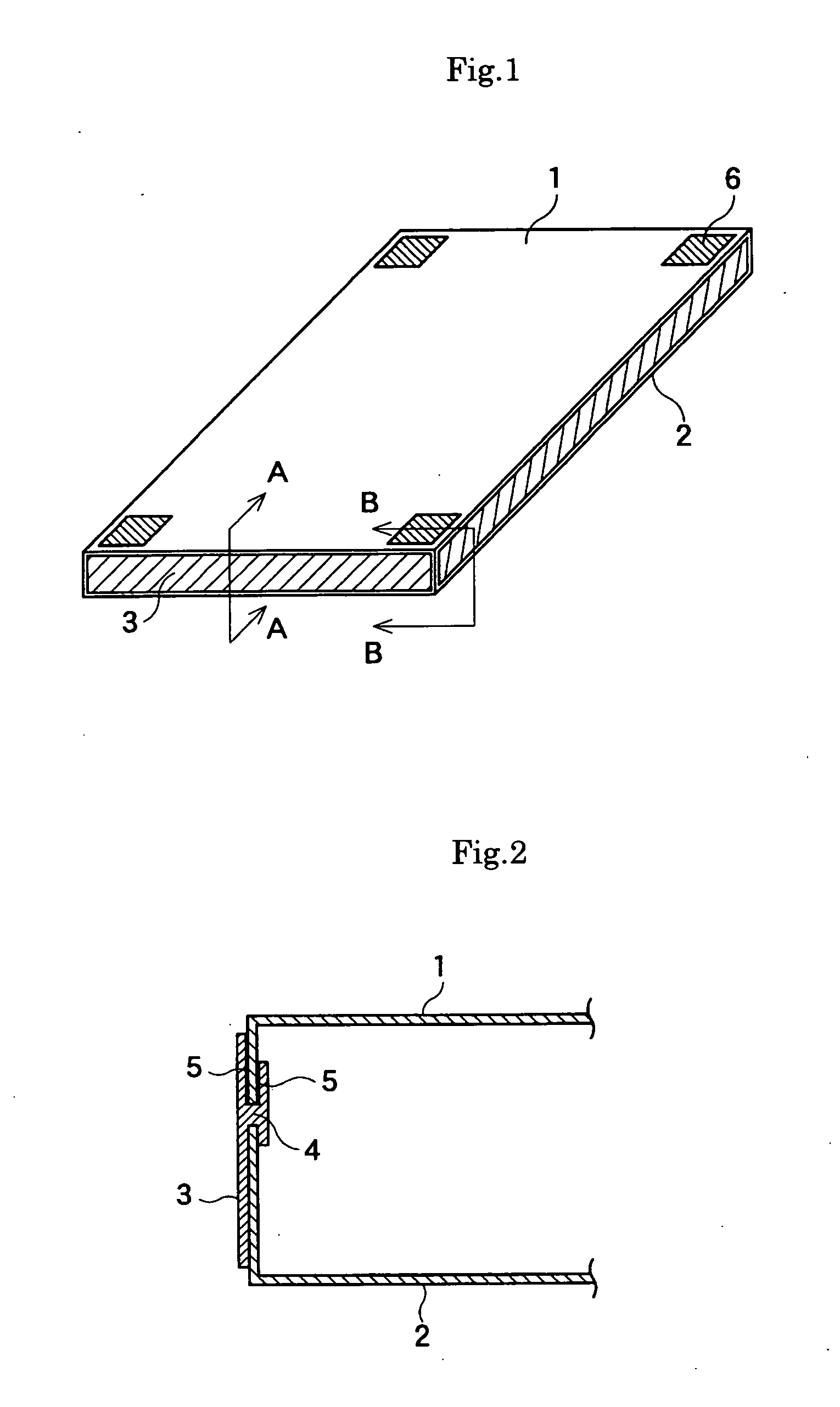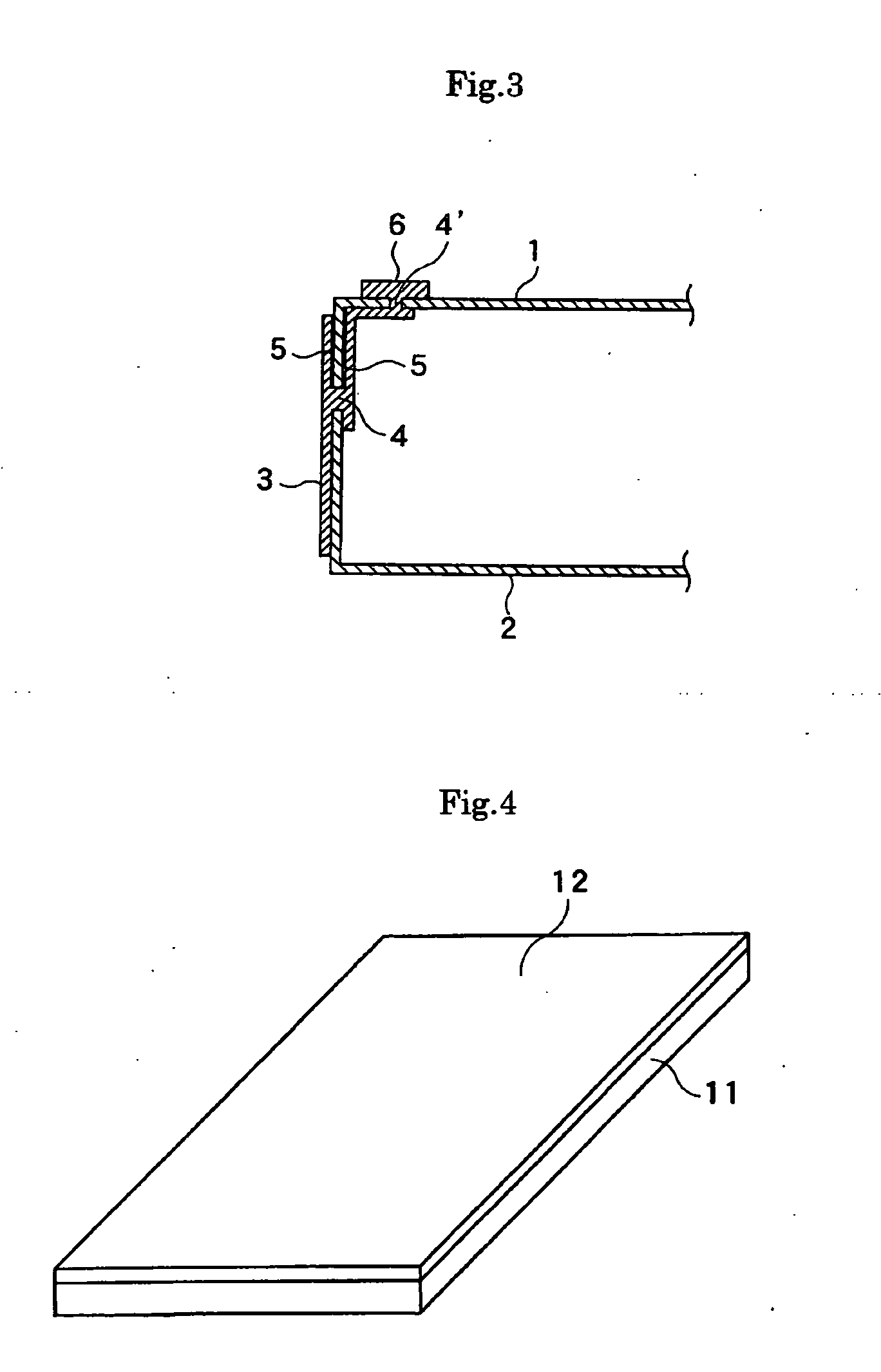Sealing material
a technology of sealing materials and acrylic rubber, which is applied in the direction of vehicle sealing arrangements, machines/engines, lubrication of auxillaries, etc., can solve the problems of flowability, vulcanization speed, inconvenience of leakage of seals, etc., and achieve moldability, improve abrasion resistance, and prevent scorch
- Summary
- Abstract
- Description
- Claims
- Application Information
AI Technical Summary
Benefits of technology
Problems solved by technology
Method used
Image
Examples
example 1
[0107]
Parts by weightAcrylic polymer100White carbon (Aerosil R974, product of Nihon25Aerosil Co.; average particle size of primaryParticles: 12 nm)Hydrosilyl group-containing compound6Hydrosilylation catalyst0.05Hardness-adjusting agent (3,5-dimethyl-1-hexine-3-0.1ol; Surfinol 61, a product of Nisshin Kagaku K.K.)Antioxidant (Irganox 1010, a product of Ciba Specialty2Chemical Co.)
[0108] The foregoing components were kneaded by a planetary mixer and a three-roll mill, and then subjected to press vulcanization (primary vulcanization) at 170° C. for 20 minutes and oven vulcanization (secondary vulcanization) at 150° C. for 10 hours to obtain a vulcanization sheet (150×150×2 mm).
[0109] The acrylic polymer used herein was a copolymer comprising butyl acrylate, ethyl acrylate and 2-methoxyethyl acrylate, further copolymerized with 1,7-octadiene to introduce alkenyl groups therein, and having a number average molecular weight Mn of 18,000, a molecular weight distribution (Mw / Mn) of 1.1 an...
example 2
[0110] In Example 1, the amount of white carbon was changed from 25 parts by weight to 10 parts by weight.
example 3
[0128] The components as used in Example 1 was mixed together through a planetary mixer and a three-roll mill, left to stand at room temperature for 24 hours, and then subjected to press vulcanization at 180° C. and 100 MPa for 20 minutes to obtain test pieces.
PUM
| Property | Measurement | Unit |
|---|---|---|
| molecular weight distribution | aaaaa | aaaaa |
| molecular weight distribution | aaaaa | aaaaa |
| seal height | aaaaa | aaaaa |
Abstract
Description
Claims
Application Information
 Login to View More
Login to View More - R&D
- Intellectual Property
- Life Sciences
- Materials
- Tech Scout
- Unparalleled Data Quality
- Higher Quality Content
- 60% Fewer Hallucinations
Browse by: Latest US Patents, China's latest patents, Technical Efficacy Thesaurus, Application Domain, Technology Topic, Popular Technical Reports.
© 2025 PatSnap. All rights reserved.Legal|Privacy policy|Modern Slavery Act Transparency Statement|Sitemap|About US| Contact US: help@patsnap.com



